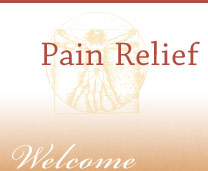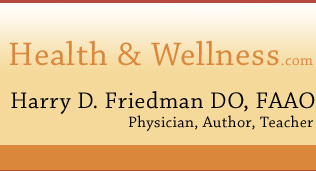There is a valuable tool that is often overlooked for cases of inflammation, particularly in cases of sports injury and arthritis: enzymes. As the unveiling of the new food pyramid suggests, diet is and inseparable issue to health, and many acute and chronic conditions may be helped by proper nutrition. However, as we age, many of us experience a decline in the amount of enzymes we produce. It is no co-incidence that we are learning that of the chronic diseases of aging are linked to inflammation. Enzymes play a crucial role in clearing inflammation from the body, not only by having a direct anti-inflammatory action, as many other agents do, but also by working on a biological level to actually heal the inflamed tissue and clear away many of the inflammatory substances from the site of inflammation. The result of this clearing effect is increased circulation at the site of inflammation, and a much faster healing process.
Enzymes have been in use for a long time in sports and in nutrition, and several studies are starting to mount on their anti-inflammatory benefits, as well as their value in athletic performance (Deitrick, 1965; Miller et al., 2004; Trickett et al., 1964). Protease supplementation has been shown in a number of clinical trials to be able to attenuate soft tissue injury after intense exercise. Another area where I see consistent results is in treating chronic arthritis patients. In both these cases, I use a high quality enzyme product, specifically, RPR, a product by the professional enzyme line of Theramedix, in the dosage of one or two capsules, two to three times daily.
As an example of the use of enzymes for athletic performance, a recent clinical study aimed to evaluate if protease supplementation was able to affect muscle soreness and contractile performance in downhill runners. Two groups of downhill runners were tested by running at a –10% grade for 30 minuets at 80% of their predicted maximal heart rate, and taking either a high protease supplement or a placebo four times daily, for 4 days. The treatment group showed superior recovery of their contractile function and much reduced effects of delayed-onset muscle soreness when compared to the placebo group. The authors commented that beyond immediate soreness, the protease supplementation may allow for a faster muscle healing process and faster restoration of contractile function post exercise (Miller et al., 2004).
In my practice I have also had a good recent example of the beneficial use of enzymes for athletic injury. Tom came to see me after suffering a head injury while bicycling. Tom was in his mid 40s and had been a true athlete all his life. Bicycling was his passion, but one day he was thrown from his bike and had suffered a concussion, a fractured rib and bruised sternum. After returning from the hospital his whole body remained stiff, he was mentally confused, and he was sleeping a lot. Tom explained to me that his whole body felt like it was100 lbs. heavier. Upon examination, it was clear that Tom had some bleeding in his anterior chest wall, and that due to this a large bruise had formed. I gave him an osteopathic treatment to help his alignment and healing of his body, and prescribed enzymes.
It was remarkable that only 4 days after Tom started on the enzymes, the bruise on his chest turned yellow and his metal confusion cleared. He felt like himself again… This indicated that the bruising and swelling had significantly resolved. I was impressed with the speed of his recovery. Tom is doing much better now, and it has only been 6 days after his visit.
I also have my own story about the use of enzymes for inflammation. About 2 months ago, I was playing basketball with my son and I injured my medial meniscus. It was extremely painful and I could not weight bear on it immediately. I started taking RPR—without any other treatments—and after 24 hours I was already starting to be able to weight bear a little bit. After 48 hours, I was weight bearing and a week later I was probably about 90% healed. I took two capsules of RPR, two times daily (I weigh 215 lbs., so for someone small they may take a little less).
The only warning I have with stronger, high quality enzymes for treating inflammation—such as the RPR product—is that people who have an acid reflux problem in their stomach could be too sensitive for the RPR at its full dose. As the RPR has immediate tissue-healing effects (Brown et al., 2004), this could cause an increase in stomach discomfort for these patients. Therefore, it is important to start with smaller dosages for these people and increase according to their tolerance.
References:Brown SA, Coimbra M, Coberly DM, Chao JJ, Rohrich RJ. Oral nutritional supplementation accelerates skin wound healing: a randomized, placebo-controlled, double-arm, crossover study. Plast Reconstr Surg. 2004 Jul;114(1):237-44.
Deitrick RE. Oral proteolytic enzymes in the treatment of athletic injuries: a double-blind study. Pa Med. 1965 Oct;68(10):35-7.
Miller, P. C. ; Bailey, S. P.; Barnes, M. E.; Derr, S. J.; Hall, E. E. The effects of protease supplementation on skeletal muscle function and DOMS following downhill running. J Sports Sci 2004 Apr; 22(4): 365-72
Trickett P.C. Uses and Abuses of Oral Proteolytic Enzymes in the Treatment of Athletic Injuries. J Am Coll Health Assoc. 1964 Dec;13:270-4.



